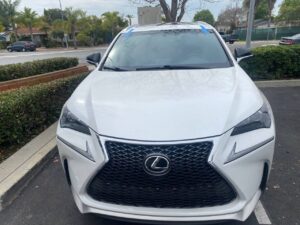Introduction to Aftermarket Windshields
Aftermarket windshields have gained considerable popularity as alternative options to Original Equipment Manufacturer (OEM) products. They are essentially replacement windshields manufactured by third-party companies and offer various advantages to consumers.
Factors Affecting Aftermarket Windshield Quality
Materials Used in Manufacturing
The quality of aftermarket windshields is heavily reliant on the materials utilized in their production. High-grade materials, such as tempered glass that meets or exceeds industry standards, contribute significantly to their durability and reliability.
Manufacturing Processes and Standards
The manufacturing processes employed in crafting aftermarket windshields greatly impact their structural integrity. Precise cutting, shaping, and adherence to stringent standards ensure optimal performance and safety.
Certifications and Safety Compliance
Opting for aftermarket windshields that hold certifications from recognized regulatory bodies, like DOT (Department of Transportation) approval, ensures compliance with strict safety standards. This certification signifies that the windshield meets safety criteria and provides reassurance to consumers.
Benefits of Aftermarket Windshields
Cost Savings Without Compromising Quality
One of the primary attractions of aftermarket windshields is their affordability without sacrificing quality. While OEM windshields may bear a higher price tag due to brand association, aftermarket options offer comparable performance at a fraction of the cost.
Warranty and Assurance
Contrary to common misconceptions, many reputable aftermarket windshield manufacturers offer warranties equivalent to or surpassing those provided with OEM products. These warranties cover defects in materials or workmanship, providing peace of mind to consumers.
Compatibility and Availability
Aftermarket windshields often come with a wide range of options compatible with various vehicle makes and models. Moreover, their availability through diverse suppliers ensures greater accessibility to consumers.
Choosing the Right Aftermarket Windshield
Researching Compatibility for Specific Vehicles
Thorough research regarding the compatibility of aftermarket windshields with specific vehicle models is crucial. Reputable suppliers usually offer compatibility databases or expert guidance to aid consumers in selecting the right windshield.
Supplier Reputation and Customer Reviews
Opting for suppliers with proven track records of delivering high-quality aftermarket windshields is advisable. Online reviews and customer feedback provide valuable insights into the reliability and performance of a supplier’s products.
Installation Considerations and Professional Advice
Considering professional installation and seeking expert advice can ensure the proper fitting and performance of aftermarket windshields. Professional guidance minimizes installation errors and maximizes the windshield’s effectiveness.
Conclusion
Aftermarket windshields offer a compelling alternative to OEM products, emphasizing affordability, quality, and compatibility. By prioritizing research, quality assurance, and compatibility, consumers can confidently choose aftermarket windshields that meet their specific needs.
FAQs
Q: Are aftermarket windshields safe to use?
A: Yes, when properly manufactured and installed, aftermarket windshields meet safety standards.
Q: How do aftermarket windshields differ from OEM?
A: Aftermarket windshields are manufactured by third-party companies, often offering cost savings compared to OEM options.
Q: Do aftermarket windshields come with warranties?
A: Yes, many reputable manufacturers provide warranties for their aftermarket windshields.
Q: Can I install an aftermarket windshield myself?
A: It’s recommended to seek professional installation to ensure proper fitting and safety.
Q: Are aftermarket windshields as durable as OEM?
A: High-quality aftermarket windshields can be as durable as OEM, meeting industry standards.






